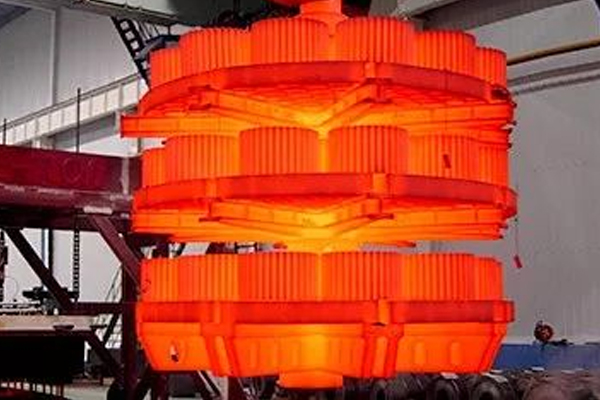Three elements of heat treatment for forgings
1. Size effect:
The mechanical properties of forged steel vary with its shape and size. Generally, the larger the size, the shallower the quenching depth and the lower the mechanical properties of the heat treatment in the same cooling medium.
2. Mass Effect
Refers to the quality (weight) of the forging is different, the final result of heat treatment is different, especially in the quenching process. Generally, the larger the diameter of the workpiece, the more difficult to quench. The larger the workpiece, the more difficult the quenching. The heat treatment results vary greatly due to different qualities.
Mass effect is the analysis of quenching effect from the point of view of workpiece size. Hardenability is the analysis of the quenching effect from the material point of view of steel. The mass effect of the workpiece with better hardenability is small, that is, the hardenability can improve the mass effect.
3. Shape effect:
Quenching effect of finger forgings is affected by the shape of parts. Different shapes of rods, plates and balls have different quenching effects. In addition, the cooling methods of different quenching parts on the same parts are different, and the quenching effect is different.
The size, quality and shape of forgings are the three elements of forgings. In the preparation of heat treatment process specification, the three elements of heat treatment process must be combined with the three elements of heat treatment workpiece, can not be divided, refer to the various manuals of heat treatment CCT, TTT and other curves can not ignore the three elements of heat treatment forgings, as well as the surface of the forging and the core of the workpiece heating, cooling temperature difference.
